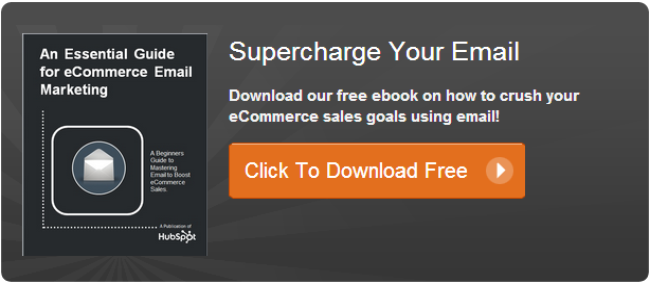 Ecommerce is the epitome of sales and marketing alignment. You can't make sales if you’re not making an effort to reach out & customers can’t find your company. The same applies, however, if your marketing efforts aren’t reaching customers. Various factors could affect the reach of your marketing, including dirty data, inattention to buyer personas, and irrelevant content. The biggest factor, however, might just be your timing.
Ecommerce is the epitome of sales and marketing alignment. You can't make sales if you’re not making an effort to reach out & customers can’t find your company. The same applies, however, if your marketing efforts aren’t reaching customers. Various factors could affect the reach of your marketing, including dirty data, inattention to buyer personas, and irrelevant content. The biggest factor, however, might just be your timing.
Reaching your buyers at a point when they’re ready to make a purchase is a tricky thing. Many suggest sending emails during work hours so those bored and looking for something to do might see the messages. The problem with this, however, is that many will pass those emails by with the intention of saving them for later. Just because these employees are looking for something to distract them from the daily grind doesn’t mean they’ll be able to make a purchase while at work.
So, how can you be sure your marketing efforts are reaching people at any point in the day? Here are a few tips:
Workday Times
While you may not be able to count on your email marketing to result in a sale during the day, you can consider it a touch that might lead to a later sale. However, sending during lunchtime might just increase the number of emails that convert to sales. To make this possible, you’ll need to segment your email contact list by location to make sure the emails arrive at the perfect time.
Problems with this method: Everyone else is probably sending ecommerce emails around the same time. To bolster your email efforts, you can attempt the next method on the list.
Retargeted Ads
What good is collecting data if you never use it? When targeting customers while they’re at work, you could make sure your ads appear on the sites they visit most during the workday. Again, these may not result in sales, unless the sites are visited during a time when they could safely make a purchase. The ads do, however, still work as yet another touch throughout the day—perhaps a reminder to make a purchase once they get home.
Problems with this method: Since buyers are looking for more relevant experiences, seeing an ad for your products while they’re on a site used for work could be off-putting. Or, you could be a welcome distraction. It could go either way.
Plan for Different Devices
If you send email marketing messages in the late afternoon and early evening, make sure the messages and ads are optimized for mobile devices. If someone opens your email or ad and can’t read it, they’ll bounce before you get a chance to get your message across.
Problems with this method: Well, none really. It’s always a great idea to make sure your marketing efforts include responsive design. So many purchases are made on mobile devices—nearly one-third of Cyber Monday purchases, to be clear—that mobile marketing is just smart.
Late Evening
You’re likely to catch more people ready to buy later in the evening, so be sure your marketing materials are created to drive conversions. As much as we argue against discounts and coupons, these are likely to lead directly to a sale when someone’s ready to make a purchase.
Problems with this method: Discounts and coupons do little to foster the relationships between you and your customers. To make the most of the connections you may through a purchase, be sure to follow up quickly with offers that show your company’s true value.
Other Problems?
The real problem with all of these methods is that you’re marketing to people, and everyone is different. Whatever works for one company might not work for yours. You must keep your buyer personas in mind when creating your marketing materials and choosing the times for sending. Stay-at-home moms might do most of their online shopping in the early afternoon, while kids are taking naps. Younger customers may do a lot of shopping late at night. The data you collect as users browse your site should tell you what you need to know about when to market, so be sure to make the most of the information you receive.
Always Be Testing
There is no universally ideal time to send emails to maximize sales. If there were, everyone would send at that time and it would become non-ideal because your recipients would be receiving a deluge of marketing messages at the same time. The key is to ensure that you're constantly analyzing and testing what times perform best for you.
As one final note, be sure to clean your email lists on a regular basis. Sending thousands of emails to bad addresses won’t help, no matter what time of day you send them.
What other tips might help marketers determine when to send ecommerce emails? Have certain times worked better than others for your company in the past? We’d love to hear your thoughts.



